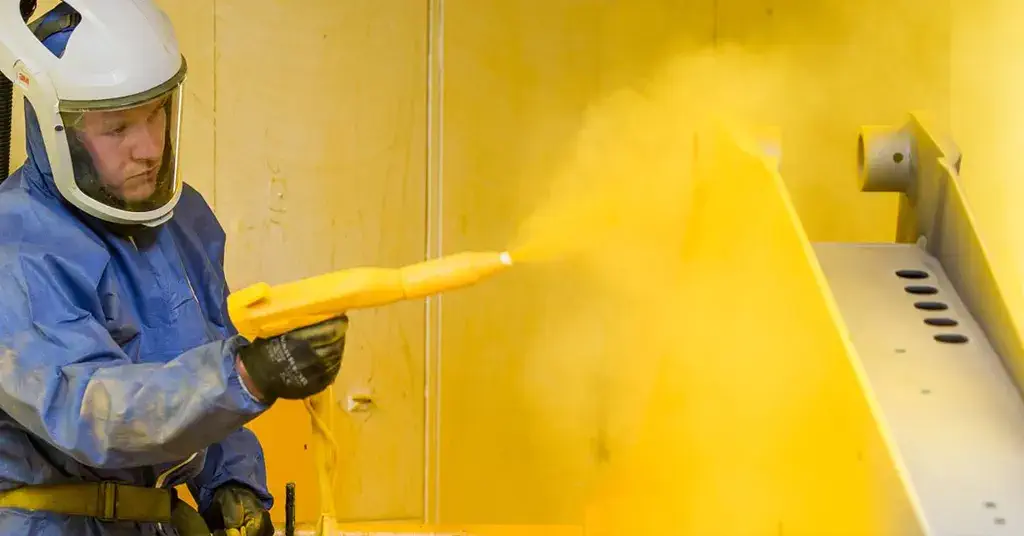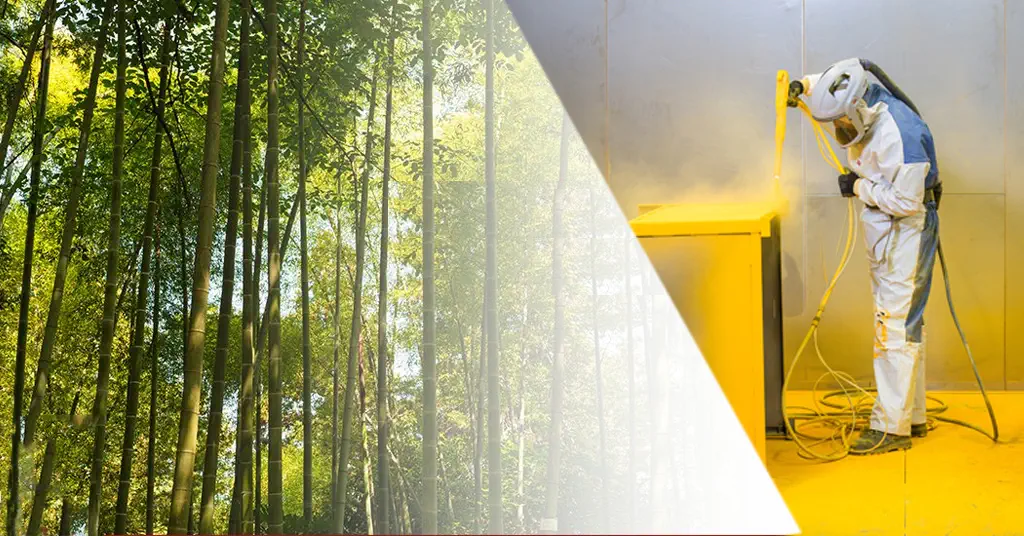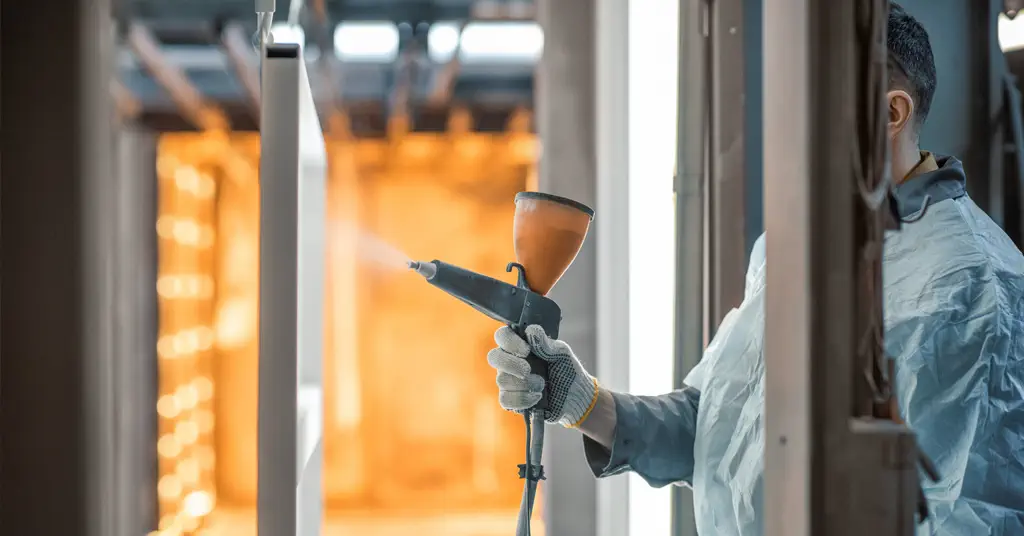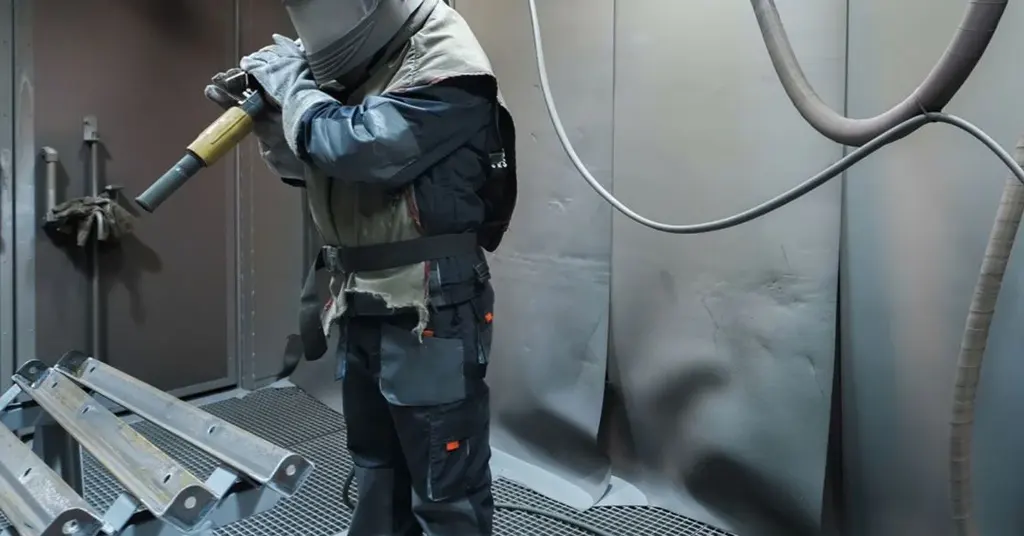Can Epoxy Powder Coatings Withstand High-Temp Electrical Insulation?
Epoxy powder coatings are widely used for electrical insulation due to their durability, chemical resistance, and high dielectric strength. But can they withstand the high temperatures often encountered in electrical applications like transformers, motors, and busbars? This article explores the thermal and electrical insulation capabilities of epoxy powder coatings, their applications, benefits, and limitations, providing a comprehensive guide for engineers, manufacturers, and industry professionals seeking reliable insulation solutions.

What Are Epoxy Powder Coatings?
Epoxy powder coatings are thermosetting powders applied as a dry, free-flowing material that melts and cures to form a hard, protective layer. Unlike liquid coatings, they contain no solvents, making them environmentally friendly and efficient, with minimal waste due to overspray recovery. These coatings are commonly used in industries like electronics, automotive, aerospace, and power distribution for insulating components such as motor armatures, busbars, and transformers. Their key properties include:
- High Dielectric Strength: Capable of withstanding high voltages without electrical breakdown.
- Thermal Stability: Maintains insulating properties at elevated temperatures.
- Chemical Resistance: Protects against moisture, chemicals, and corrosion.
Durability: Resists mechanical stress, scratches, and abrasion.
Can Epoxy Powder Coatings Withstand High Temperatures?
Thermal Performance of Epoxy Powder Coatings
Epoxy powder coatings are engineered to perform in demanding environments, but their ability to withstand high temperatures depends on the formulation and application method. Standard epoxy coatings are typically rated for continuous use at temperatures up to 130°C (266°F), classified as Class B insulation per UL standards. However, specialized high-temperature epoxy formulations can endure temperatures up to 200°C (392°F) or higher in some cases, making them suitable for applications like electric motors and transformers that generate significant heat during operation.
For example, certain epoxy coating powders, such as those offered by SolEpoxy, are designed for high-voltage applications and can maintain insulation integrity at elevated temperatures. These coatings are applied using methods like electrostatic spraying or fluidized bed dipping, which allow for uniform thickness and enhanced thermal resistance. However, for extreme temperatures exceeding 550°C (1022°F), silicone-based or ceramic coatings may be more appropriate, as standard epoxy coatings may degrade or lose insulating properties.
Key Factors Affecting Thermal Stability
Several factors influence the thermal performance of epoxy powder coatings:
- Formulation: High-temperature formulations incorporate heat-resistant fillers and resins with higher molecular weight and cross-linking density, enhancing thermal stability.
- Coating Thickness: Thicker coatings (e.g., 4mm via fluidized bed) provide better insulation for high-voltage applications but may require preheating to ensure adhesion and uniformity.
- Curing Process: Proper curing at 150–200°C (300–400°F) ensures a dense, uniform coating that withstands thermal cycling without cracking.
- Environmental Conditions: Exposure to humidity, chemicals, or thermal cycling can affect long-term performance, requiring coatings with enhanced environmental resistance.
Electrical Insulation Capabilities
Epoxy powder coatings are prized for their high dielectric strength, typically ranging from 1,000 to 50,000 volts depending on thickness and application. For instance:
- Low-Voltage Applications (<600V): Thin coatings (250 microns) applied via electrostatic spraying are sufficient.
- Medium-Voltage Applications (up to 38,000V): Thicker coatings (up to 1200 microns) achieved through preheating and spraying or fluidized bed dipping are required.
- High-Voltage Applications (up to 50,000V): Specialized epoxy powders applied in multiple layers (up to 5mm) via fluidized bed methods can insulate high-voltage busbars.
These coatings prevent electrical leakage, short circuits, and arcing, making them ideal for components like transformers, capacitors, and printed circuit boards (PCBs). Their ability to conform to complex geometries, such as motor windings or busbars with bends, ensures consistent insulation even in challenging designs.
Applications of Epoxy Powder Coatings in High-Temp Environments
Epoxy powder coatings are used across various industries where high-temperature electrical insulation is critical:
- Transformers: Insulate windings and cores to prevent electrical faults under high thermal loads.
- Electric Motors and Generators: Protect against short circuits and maintain efficiency in high-temperature operations.
- Busbars and Switchgear: Provide durable insulation for power distribution systems, resisting heat and corrosion.
- Capacitors and PCBs: Ensure reliable insulation to prevent leakage and maintain performance in electronic devices.
- Aerospace and Automotive: Used in components exposed to high temperatures and mechanical stress, such as engine covers and exhaust systems.
For example, Storm Power Components applies epoxy coatings to busbars using fluidized bed or electrostatic spray methods, achieving dielectric strengths suitable for high-voltage applications while maintaining thermal stability up to 130°C.
Benefits of Epoxy Powder Coatings for High-Temp Insulation
- Superior Electrical Insulation: High dielectric strength prevents electrical breakdown, ensuring safety and reliability.
- Thermal Resistance: Maintains performance in high-temperature environments, reducing the risk of insulation failure.
- Durability: Resists mechanical stress, scratches, and abrasion, extending component lifespan.
- Environmental Resistance: Protects against moisture, chemicals, and corrosion, ideal for harsh conditions.
- Ease of Application: Electrostatic spraying or fluidized bed methods allow uniform coating on complex shapes.
- Eco-Friendly: Solvent-free application reduces volatile organic compound (VOC) emissions, supporting sustainability.
Limitations and Considerations
While epoxy powder coatings excel in many areas, they have limitations:
Temperature Limits: Most epoxy coatings are not suitable for continuous exposure above 200°C, where silicone or ceramic coatings may be required.
- Initial Costs: High-quality epoxy powders and application equipment can be expensive, though long-term durability offsets costs.
- Application Precision: Proper surface preparation and curing are critical to avoid defects like voids or uneven thickness, which can compromise insulation.
- Thermal Cycling: Repeated heating and cooling may cause cracking in poorly formulated coatings, requiring careful selection of high-temperature grades.
How to Choose the Right Epoxy Powder Coating
When selecting an epoxy powder coating for high-temperature electrical insulation, consider the following:
- Operating Temperature: Ensure the coating’s thermal rating matches the application’s maximum temperature (e.g., Class B for 130°C or higher for specialized needs).
- Voltage Requirements: Match dielectric strength to the application’s voltage (e.g., thicker coatings for medium/high-voltage systems).
- Application Method: Choose electrostatic spraying for thin, uniform coatings or fluidized bed for thicker layers on complex geometries.
- Environmental Conditions: Select coatings with enhanced resistance to humidity, chemicals, or UV exposure if applicable.
- Substrate Compatibility: Ensure strong adhesion to materials like copper, aluminum, or steel to prevent delamination.
Consulting with manufacturers like PPG Coatings or SolEpoxy can help identify formulations tailored to specific needs. Tools like dielectric strength testers and thermal cycling simulations can validate coating performance before deployment.
Comparison with Other Insulation Materials
| Material | Max Temp (°C) | Dielectric Strength | Key Advantages | Key Limitations |
|---|---|---|---|---|
| Epoxy Powder Coating | 130–200 | 1,000–50,000V | Durable, chemical-resistant, eco-friendly | Limited above 200°C, application precision |
| Silicone-Based Coating | 550+ | 500–20,000V | Extreme heat resistance, flexible | Lower dielectric strength, higher cost |
| Ceramic Coating | 1,800 | Varies | Extreme temp resistance, thermal insulation | Brittle, expensive, complex application |
| Nylon Coating | 150–200 | 1,000–10,000V | Flexible, sanitary, shock protection | Less durable than epoxy, limited temp |
For high-temperature electrical insulation below 200°C, epoxy powder coatings offer a balanced combination of performance, cost, and ease of application compared to alternatives.
Best Practices for Applying Epoxy Powder Coatings
- Surface Preparation: Clean substrates thoroughly to remove contaminants, ensuring strong adhesion.
- Preheating: For thicker coatings, preheat parts to 220°C to enhance powder adhesion and uniformity.
- Application Method: Use electrostatic spraying for thin, uniform coatings or fluidized bed for thicker layers on complex shapes.
- Curing: Cure at 150–200°C to form a dense, cross-linked coating with optimal dielectric and thermal properties.
- Quality Control: Inspect coating thickness, adhesion, and dielectric strength to ensure compliance with standards like UL 94 V-0.
Conclusion
Epoxy powder coatings are a reliable choice for high-temperature electrical insulation in applications up to 200°C, offering excellent dielectric strength, durability, and environmental resistance. While they may not suit extreme temperatures above 550°C, their versatility, eco-friendliness, and cost-effectiveness make them ideal for transformers, motors, busbars, and more. By selecting the right formulation, application method, and quality control measures, engineers can ensure long-lasting, safe, and efficient insulation performance.

Erik
Doctor of Chemical Engineering, expert in the field of powder coatings, with over 20 years of professional experience in the research and application of powder coatings
Have Anything To Ask Us?




